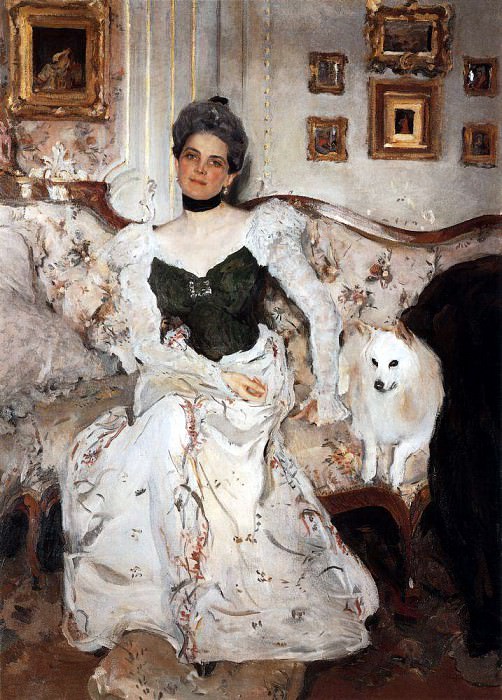Portrait of Princess Zinaida Yusupova. 1,902 Valentin Serov (1865-1911)
Valentin Serov – Portrait of Princess Zinaida Yusupova. 1,902
Edit attribution
Download full size: 717×1000 px (0,2 Mb)
Painter: Valentin Serov
The portrait of Princess Zinaida Nikolayevna Yusupova, painted in the very beginning of the 20th century, was created by the artist by order of the princess herself. At that time Valentin Serov was already widely known among the nobility as a talented and peculiar painter; many were ready to order a personal portrait from him, but Serov himself disapproved of their wishes, considering them excessively "conceited and rich".
Description of Valentin Serov’s painting "Portrait of Princess Z. N. Yusupova".
The portrait of Princess Zinaida Nikolayevna Yusupova, painted in the very beginning of the 20th century, was created by the artist by order of the princess herself. At that time Valentin Serov was already widely known among the nobility as a talented and peculiar painter; many were ready to order a personal portrait from him, but Serov himself disapproved of their wishes, considering them excessively "conceited and rich". However, the beautiful Yusupova was an exception for the artist: according to Serov’s own confession, he saw in this princess not only outwardly attractive, but also a high moral and kind woman, in addition, not alien to art.
Indeed, Zinaida Nikolayevna Yusupova appreciated art in its various forms. Playing in amateur home shows, she delighted the audience with her play. The heiress of a fabulous fortune, she donated much to support the fine arts, including contributing money to the Museum of Fine Arts. Zinaida Yusupova was considered a woman of good education and manners, which could not be better suited to her high status.
Critic S. Goloushev gave a very high assessment of the portrait of Yusupova: in his words, the princess depicted in the picture is almost a model image of a representative of high society, who knows how to hold the height, away from everything that could degrade her honor. Goloushev called her the Marquise of her time.
Кому понравилось
Пожалуйста, подождите
На эту операцию может потребоваться несколько секунд.
Информация появится в новом окне,
если открытие новых окон не запрещено в настройках вашего браузера.
You need to login
Для работы с коллекциями – пожалуйста, войдите в аккаунт (open in new window).




















COMMENTS: 1 Ответы
KLASS!!!
You cannot comment Why?
In the painting Portrait of Princess Zinaida Yusupova from 1902, we see a regal-looking woman seated on an ornate sofa, accompanied by her small, white dog. Princess Zinaida is dressed in a dark green bodice and a voluminous white skirt adorned with a delicate floral pattern and subtle red accents. Her hair is styled up, and she wears a black choker necklace, accentuating her fair complexion and direct gaze. The background shows a richly decorated room with striped wallpaper and several framed artworks hanging on the wall, contributing to the opulent atmosphere.
Subtexts:
The painting conveys a sense of wealth and social standing. The luxurious attire of the princess, the elaborate furnishings of the room, and the presence of a companion animal all point to her privileged life. The framed artworks suggest a cultured environment, perhaps an appreciation for art or a display of family heritage.
The princesss direct and confident gaze as she looks out at the viewer can be interpreted as a symbol of her self-assuredness and status. She is not passively posing but actively engaging with the audience, projecting an image of control and presence.
The inclusion of the small white dog often symbolizes loyalty, companionship, and purity. Its presence beside the princess adds a touch of intimacy and warmth to the portrait, perhaps hinting at her personal affections or her desire to present a softer, more approachable side amidst her aristocratic bearing.
The overall composition and style of the portrait, with its emphasis on texture, light, and detail, aim to capture not just a likeness but also the essence of the princesss character and her place within society. It serves as a testament to her importance and the affluent world she inhabited at the turn of the 20th century.